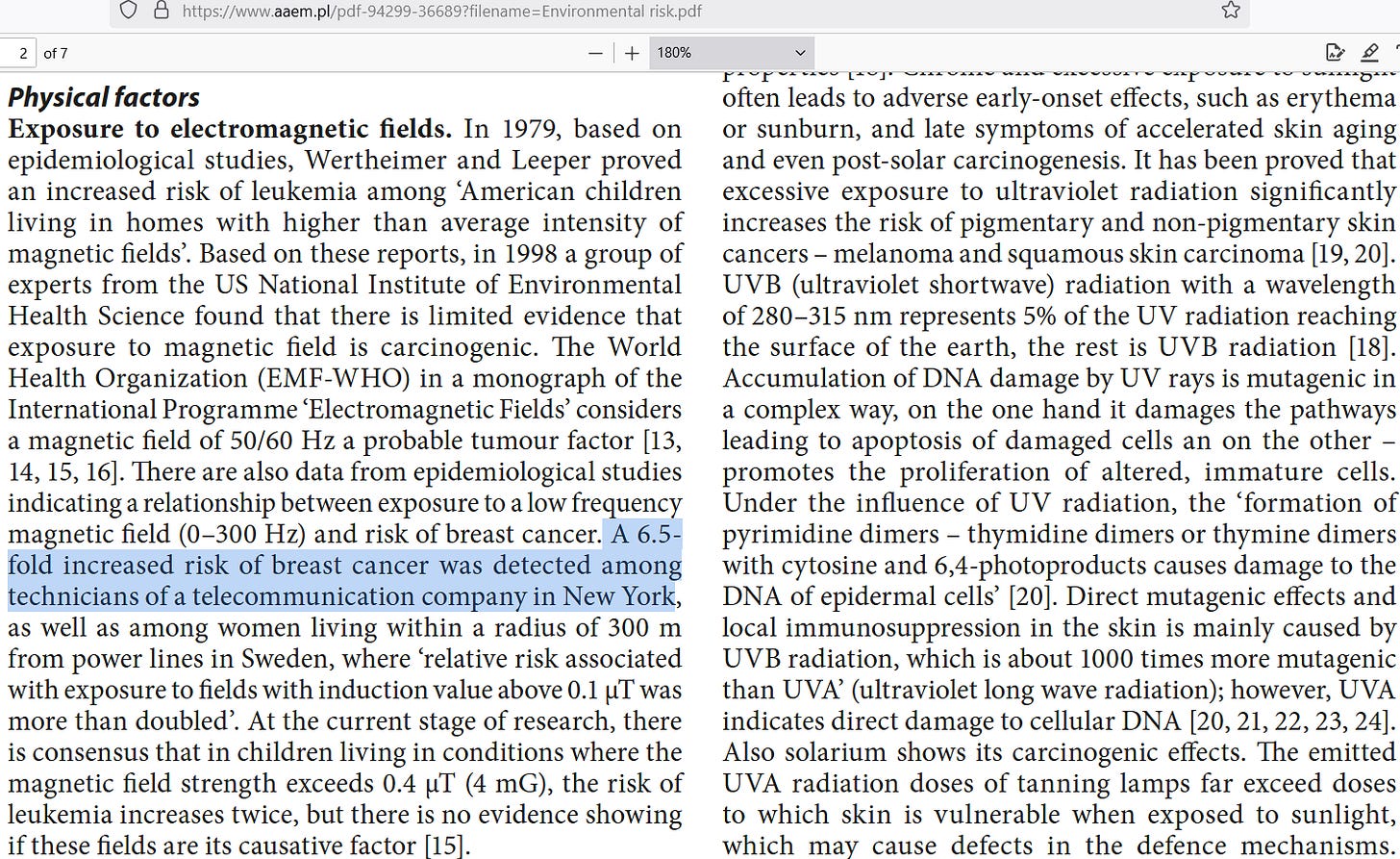In a prior post here, 5 reports of brain tumors in nurses from a single hospital in Massachusetts were statistically analyzed. But follow-up research by the hospital did not produce any leads as to what might have led to several brain tumors over a few years. The hospital said that it failed to find environmental risk factors.
But just because a search comes up empty, it does not mean that there is nothing to be found. The Massachusetts Nurses Association said that they do not believe that the hospital searched comprehensively enough for causes. My current hypothesis on what caused the tumors involves a nitrate compound from the pharmacy on the floor below.
My current hypothesis also involves non-ionizing radiation from the 3 cell towers nearby. When joined together, those two things create hyperplasia (unchecked cell division) in the brain. But let’s not put the cart before the horse. Let’s first solve Bayes’ Theorem for the probability of an environmental risk factor being involved.
Genes vs Environment
At the 40,000 foot level, all maladies simultaneously involve a mix of genetics and environmental factors. Genes prescribe the correct environment for your body, and then you attempt to decode the types of environments which would be least harmful to you. An example would be genes for fish gills, allowing fish to thrive underwater.
Because of having different genes than fish, humans thrive “above” water. The genes determine what effect your environment is going to have on you. But at a more microscopic level, you can ask on which side, genes or environment, the locus of causation is situated. Some environments are so bad that no genes work with them.
Some genetic mutations are so bad that no environments currently known work with them. And there is a sliding scale in between. Environments a little less bad might work with 80% of people’s genomes. Genetic mutations a little less bad might work in 80% of the types of environments which humans choose to put themselves into.
The question becomes:
Which factor — genes or environment — controls most (>51%) of the outcomes?
With cancer, most outcomes are controlled by the different types of environments that we expose ourselves to — rather than being primarily under the control of our genes. A point estimate on the share of all cancer coming from our environment is 85% (halfway between 80% and 90%):
That means that the share of all cancers which would have occurred over a broad range of environments — because they primarily stem from prior genetic peculiarity which made someone especially susceptible to developing cancer — is about 15%. Then we need to know about the probability of getting tumors when exposed.
We already know about the random chance to get brain tumors, because that was involved in the prior report, utilizing a baseline rate of brain tumor incidence in adults. But we need to know by how much more the exposure to environmental risk factors increases risk. One estimate is that it increases baseline risk by 6.5x:
And now we have the 4 numbers that are needed to solve any Bayes Theorem equation:
— the prior chance that your guess was right (that your hypothesis would be true)
—the prior chance that your guess was wrong (that your hypothesis would be false)
—the effect size of the change in likelihood when your guess is right
—the residual likelihood of witnessing events even when your guess is wrong
Notice how the last two things cover all of the ways for events to occur: they have some chance to occur when you are right about their cause, and they have some chance to occur when you are wrong about their cause — and the sum of those two chances represents all of the chances for the events to ever occur. Here’s Bayes:
And here it is with some explanation:
At left is what you solve for, the chance of being right about the cause, given the occurrence of the events you witnessed. On the right side at top (12 o’clock position), we have the conditional probability of witnessing the events after assuming we are right about the cause of those events.
To solve for that probability (the Environmental Risk Factor probability; ERF), we take the baseline risk that people face, and then multiply it by 6.5x — because one estimate (screenshot above) is that ERFs multiply your cancer risk by that much. If we are right about the cause of the tumors, then they had about an 8.47% chance to occur:
Then, going right (to the 2 o’clock position), we have the prior chance of being right: the share of all cancers due to environments. We discovered at very top that that probability was 0.85 (85% of all cancers).
That leaves us 0.15 as the probability of being wrong about the cause being environmental. And then, just to the left of that bottom-right term, we have the random chance to get brain tumors without assuming any special cause for them: the general population baseline (random) risk for the brain tumors:
After plugging in, we get this:
Which means that the probability that an environmental factor is behind these brain tumors — and that the hospital simply did not “look hard enough” in order to uncover it — is 99.9927%.
Reference
[environment is the primary contributor to 85% of all cancers] — Lewandowska AM, Rudzki M, Rudzki S, Lewandowski T, Laskowska B. Environmental risk factors for cancer - review paper. Ann Agric Environ Med. 2019 Mar 22;26(1):1-7. doi: 10.26444/aaem/94299. Epub 2018 Oct 17. PMID: 30922021. https://www.aaem.pl/Environmental-risk-factors-for-cancer-review-paper,94299,0,2.html








